Inside The New York Botanical Garden
Archive: January 2013
Posted in Science on January 16 2013, by Scott Mori
Scott A. Mori has been studying New World rain forests for The New York Botanical Garden for over 35 years. He has witnessed an unrelenting reduction in the extent of the tropical forests he studies and as a result has become interested in the ecosystem services provided by them.
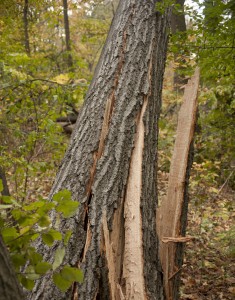 Hurricane Sandy left a path of fallen trees throughout its course, including over 100 at The New York Botanical Garden. Included in this devastation at the NYBG was a 101-foot-tall red oak thought to be 200 years old; this majestic tree provided the right habitat for spring-blooming plants in the Azalea Garden. Repeated storms with such force and frequency are making people ask if the storms could be related to global warming.
Hurricane Sandy left a path of fallen trees throughout its course, including over 100 at The New York Botanical Garden. Included in this devastation at the NYBG was a 101-foot-tall red oak thought to be 200 years old; this majestic tree provided the right habitat for spring-blooming plants in the Azalea Garden. Repeated storms with such force and frequency are making people ask if the storms could be related to global warming.
Climatologists have demonstrated that impressive swings in climate have taken place over the course of earth’s history—for example, the northeastern United States has been covered by glaciers during some periods and by tropical forests at other times. Because of these extremes of climate, it is difficult to say with certainty what the cause of such violent weather is. The proximate, or direct, cause of Hurricane Sandy was the convergence of three “normal” weather patterns: 1) a tropical storm with very strong winds coming from the south; 2) a trough of low pressure from the Arctic that strengthened the storm as it moved north; and 3) a block of high pressure in the northeastern Atlantic which forced the storm inland. In contrast, the more difficult question is: “What are the ultimate causes that make storms stronger and more frequent?”
Read More
Posted in Around the Garden, Photography on January 16 2013, by Matt Newman
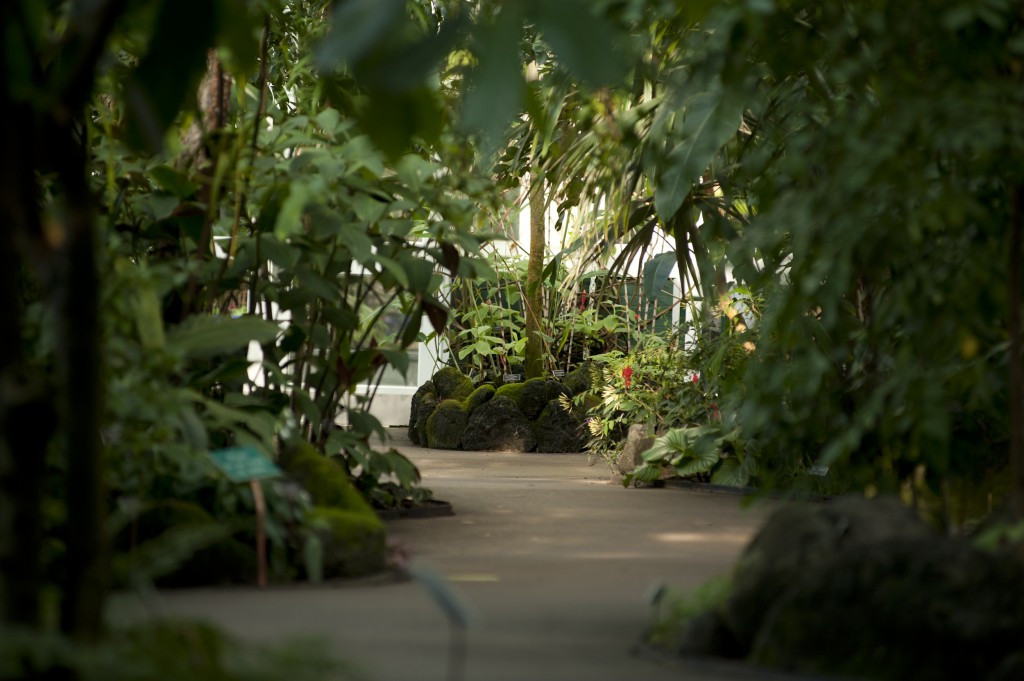
The Enid A. Haupt Conservatory — Photo by Ivo M. Vermeulen
Posted in Gardens and Collections on January 15 2013, by Sonia Uyterhoeven
Sonia Uyterhoeven is the NYBG‘s Gardener for Public Education.
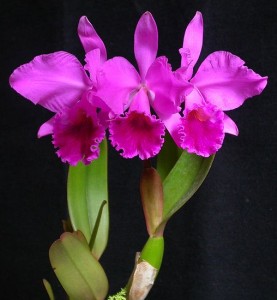 In December, I recounted the story of the renowned 19th century botanist Asa Gray’s quest for Oconee bells (Shortia galacifolia). The New Year brings new stories; this one takes us on a journey from the northeastern region of Brazil to English hothouses and Scottish botanic gardens. It is the tale of one of the early discoveries of the corsage orchid: Cattleya labiata.
In December, I recounted the story of the renowned 19th century botanist Asa Gray’s quest for Oconee bells (Shortia galacifolia). The New Year brings new stories; this one takes us on a journey from the northeastern region of Brazil to English hothouses and Scottish botanic gardens. It is the tale of one of the early discoveries of the corsage orchid: Cattleya labiata.
In 1816, a naturalist named William Swainson traveled into the jungles of northern Brazil in search of exotic ferns, mosses, and tropical plants to send back to collectors and botanical gardens in the United Kingdom. One of his shipments reached a man named William Cattley. A collector and avid horticulturist, Cattley lived on the outskirts of London in Barnet, England, where he grew topical plants–including orchids–in his hothouse.
Many stories from the past are surrounded by a certain mythology, and this one is no exception. The romantic version of this tale is that Cattley received a specimen of the orchid used as packing material to protect a shipment of ferns. The keen horticulturist was wise to see that he had something special in hand, and rescued the orchid from the packing material.
Read More
Posted in Around the Garden, Photography on January 15 2013, by Matt Newman
A dainty future star, waiting for its exhibition to come around in the Nolen Greenhouses for Living Collections.
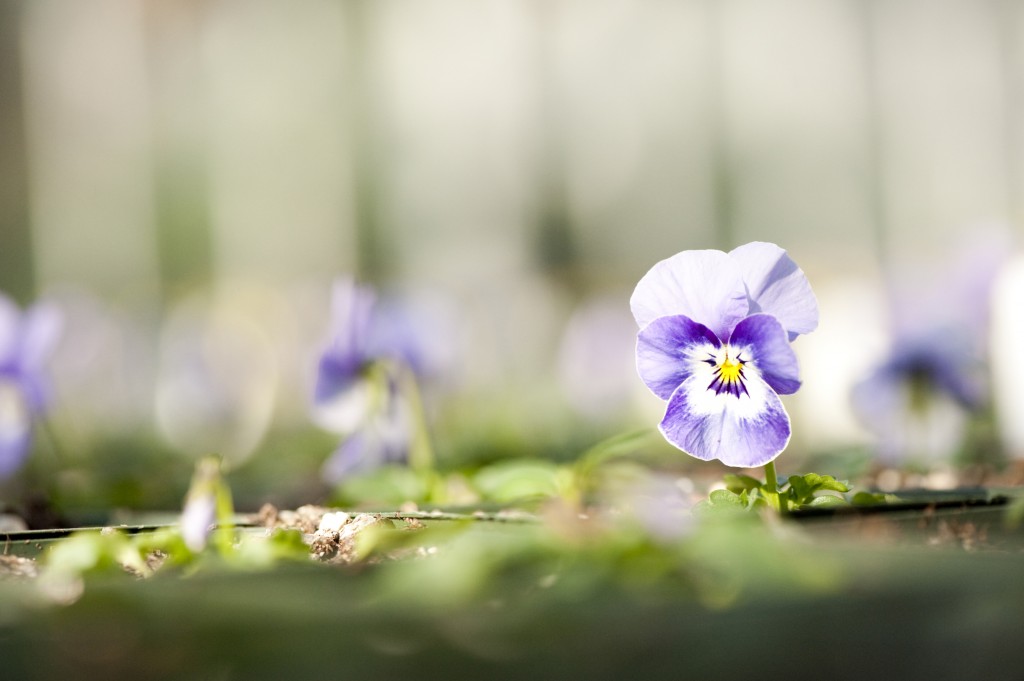
Photo by Ivo M. Vermeulen
Posted in Around the Garden, Photography on January 14 2013, by Matt Newman
Green on green is nothing special in the plant world, at least up until you find a flower of such description. At that moment, things sway into the realm of magical. It all begins March 3rd–mark your calendars!
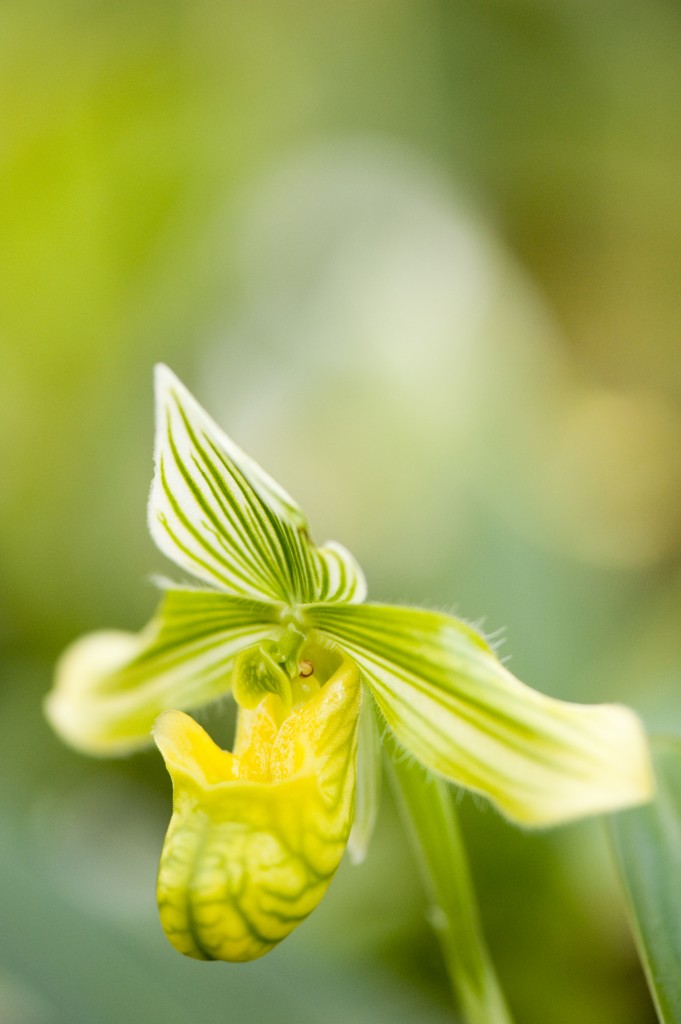
Paph. venustum — Photo by Ivo M. Vermeulen
Posted in Around the Garden, Photography on January 13 2013, by Matt Newman
Today marks the last day of 2012’s Holiday Train Show, and while it’s bittersweet to see the trains leave station for the last time until next winter, we’re happy to have given so many thousands of people a few holiday memories to tuck away. Until next season!

Photo by Ivo M. Vermeulen
Posted in Around the Garden, Photography on January 12 2013, by Matt Newman
To prove that even succulents can boast the brightest colors, Echeveria is always willing to step up to bat. You might even catch a few flaunting their stuff in the arid landscape houses of the Enid A. Haupt Conservatory.
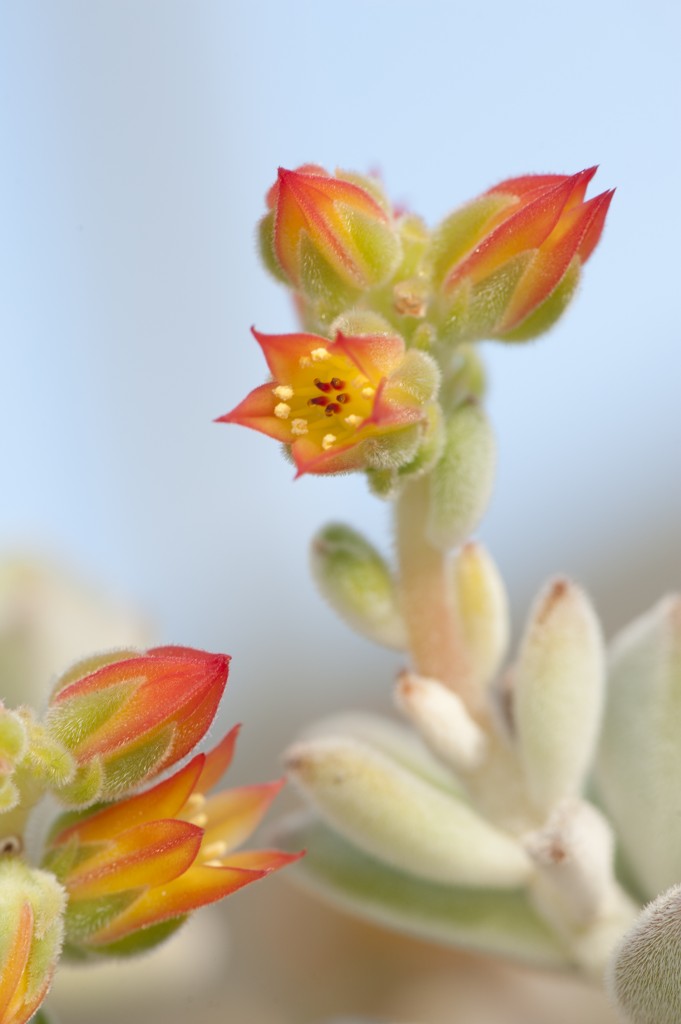
Echeveria leucotricha — Photo by Ivo M. Vermeulen
Posted in Around the Garden on January 11 2013, by Matt Newman
 The ornaments have been shuffled into the attic and you’ve wrapped your holiday lights into an “unknottable” ball (we’ll see what the garage has to say about that in eleven months). For most, the holidays are done with. But while work and school are back in full swing, the celebration continues here at the NYBG. Our lights are still twinkling, our conifers still decked to the nines in seasonal flash–you’ll hear at least a few quiet Christmas classics humming in the Conservatory. Sadly, at some point, we do have to pack it in for another year (coming exhibitions need the space to sprawl). This weekend, we say goodbye to the Holiday Train Show of 2012.
The ornaments have been shuffled into the attic and you’ve wrapped your holiday lights into an “unknottable” ball (we’ll see what the garage has to say about that in eleven months). For most, the holidays are done with. But while work and school are back in full swing, the celebration continues here at the NYBG. Our lights are still twinkling, our conifers still decked to the nines in seasonal flash–you’ll hear at least a few quiet Christmas classics humming in the Conservatory. Sadly, at some point, we do have to pack it in for another year (coming exhibitions need the space to sprawl). This weekend, we say goodbye to the Holiday Train Show of 2012.
Of course, thousands of people have already taken advantage of the stretched holiday schedule at the Garden, and there are still a couple of days for you to do so! We’ll be running our normal Conservatory schedule throughout Saturday and Sunday, with one last Train Show tour on Saturday at 2:30. You’ll also catch Thomas & Friends™ continuing throughout the weekend (though we hope you bought your tickets already, most shows are sold out). That event happens to keep the pace until January 27, so even if you can’t make it this time, there are still plenty of opportunities waiting for you.
Read More
Posted in Science on January 11 2013, by Scott Mori
Scott A. Mori has been studying New World rain forests for The New York Botanical Garden for over 35 years. He has witnessed an unrelenting reduction in the extent of the tropical forests he studies and as a result has become interested in the ecosystem services provided by them.
Manisha Sashital, a student in Environmental Engineering at Carnegie Mellon University, worked on a botanical glossary under the supervision of Dr. Mori as an intern at the Garden this past summer.
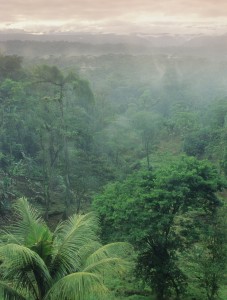 Just like languages, the sciences have vocabularies that must be mastered before their literature can be understood. Without understanding vocabulary, one cannot speak or write a language—just like one can not understand the morphology and anatomy of plants; their ecological relationships with other plants and animals; and their interactions with the environment in which they live without understanding the terms that describe the features of plants and their interactions. Learning the terminology of Botany is frustrating to beginners and experienced botanists alike because the vocabulary is vast, there are many synonyms for the same terms, and terms are a combination of Latin, Greek, and English words. There are numerous botanical glossaries available, for example the classics: A Glossary of Botanical Terms by B. D. Jackson and Botanical Latin by William T. Stern, and too many others to mention in this blog. Why then is there a need for another glossary?
Just like languages, the sciences have vocabularies that must be mastered before their literature can be understood. Without understanding vocabulary, one cannot speak or write a language—just like one can not understand the morphology and anatomy of plants; their ecological relationships with other plants and animals; and their interactions with the environment in which they live without understanding the terms that describe the features of plants and their interactions. Learning the terminology of Botany is frustrating to beginners and experienced botanists alike because the vocabulary is vast, there are many synonyms for the same terms, and terms are a combination of Latin, Greek, and English words. There are numerous botanical glossaries available, for example the classics: A Glossary of Botanical Terms by B. D. Jackson and Botanical Latin by William T. Stern, and too many others to mention in this blog. Why then is there a need for another glossary?
The answer is that electronic glossaries provide those with an interest in botany access to more information than hard copy publications. For example, electronic glossaries can be illustrated with more images than hard copy publications because of the high costs of printing, especially of images in color, and they can be immediately corrected when a mistake is brought to the attention of the authors. Electronic glossaries are instantaneously available to anyone with a connection to the internet, and links can be made to definitions of other terms related to a particular term under consideration. In addition, electronic glossaries can be attached to electronic keys to break down complex terminology used to identify unknown plants; for example, if a choice in a key asks if the ovary of a flower is superior or inferior, a link can be provided to these terms in a glossary where they are defined and illustrated.
Read More
Posted in Around the Garden, Photography on January 11 2013, by Matt Newman
It’s 40 degrees and, for now, we can see the sun, but we’re still ringing in the weekend with snowflakes. Happy Friday, everybody!
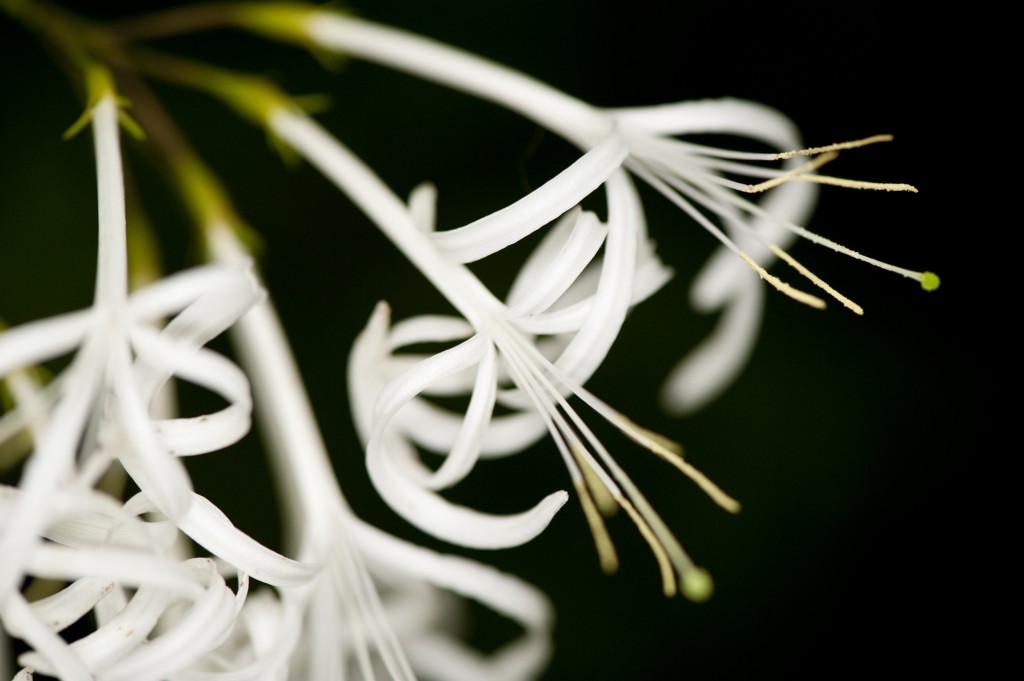
Exostema lineatum — Photo by Ivo M. Vermeulen
 Hurricane Sandy left a path of fallen trees throughout its course, including over 100 at The New York Botanical Garden. Included in this devastation at the NYBG was a 101-foot-tall red oak thought to be 200 years old; this majestic tree provided the right habitat for spring-blooming plants in the Azalea Garden. Repeated storms with such force and frequency are making people ask if the storms could be related to global warming.
Hurricane Sandy left a path of fallen trees throughout its course, including over 100 at The New York Botanical Garden. Included in this devastation at the NYBG was a 101-foot-tall red oak thought to be 200 years old; this majestic tree provided the right habitat for spring-blooming plants in the Azalea Garden. Repeated storms with such force and frequency are making people ask if the storms could be related to global warming.








